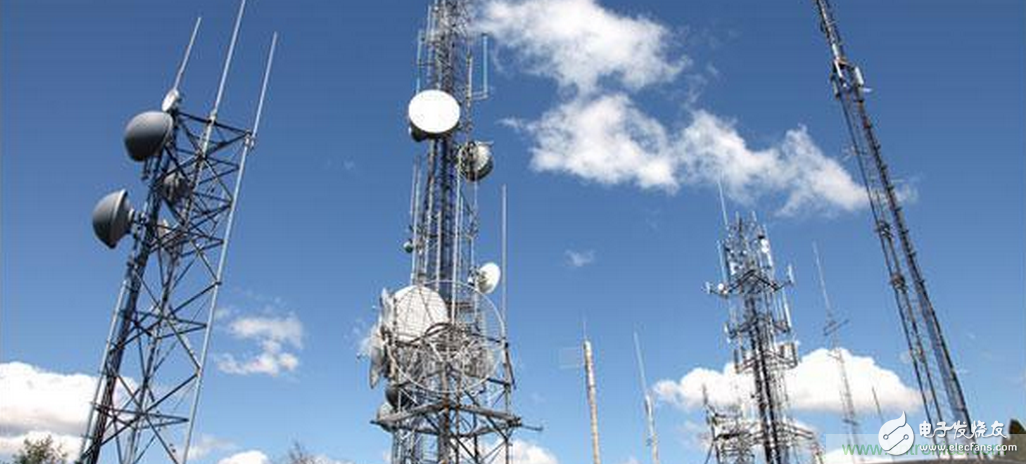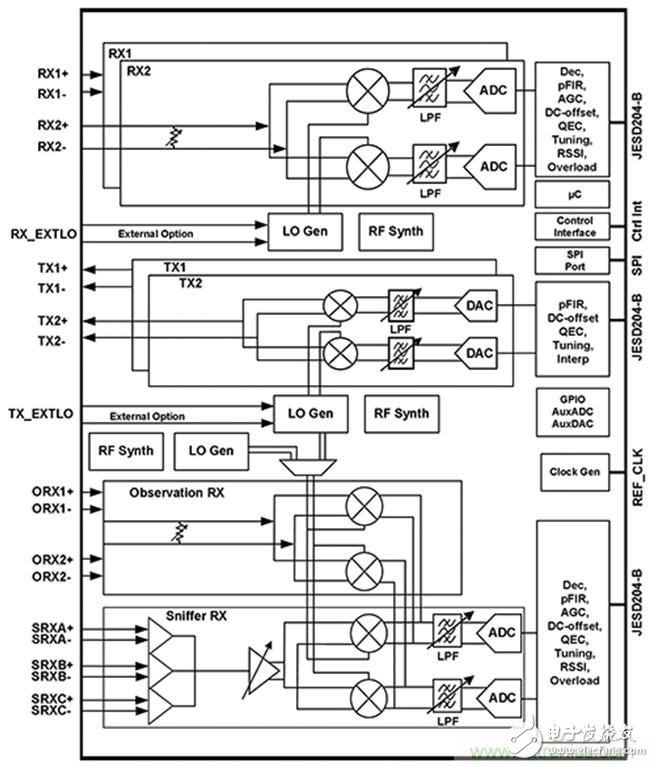
Wireless connections are now all the time, from time to time, and they include connections between people and people, people and devices, devices and devices. In addition to traditional voice calls and texting, the demand for high-speed data services has been greatly released. The connection between devices and devices is increasing with the promotion of various smart applications such as smart homes, smart cars, and smart grids. Last month, the NB IoT standard was adopted by 3GPP, and it will be officially commercialized next year. This will bring more connections between devices and devices.
More high-speed connections result in an exponential increase in data traffic. The growth of data traffic is bound to have higher and higher requirements for the capacity of mobile communication networks. To improve network capacity, in addition to the traditional network expansion method, in order to meet the future massive data connection, and a large amount of data traffic growth, we need to propose a new network architecture, ADI's communications infrastructure business unit China strategic market understand To the reporter at the RadioVerse Technology and Design Ecosystem Conference.

He pointed out that by 2020, compared with the existing 4G/LTE architecture, the data rate of end users will increase by 100 times, the number of connected devices will increase by 100 times, and the network delay will be five times lower (intranet, VR needs). Low-latency real-time connection), battery life is increased by 10 times, and mobile data traffic is increased by 1000 times.
Higher data rate requirements are bound to require higher bandwidth. In the existing wireless communication band, it has been difficult to find continuous high-bandwidth spectrum. Therefore, in addition to the new technology to solve the air interface, 5G has a direction to shift the frequency up to the microwave/millimeter wave band, the solution manager said. In addition, the evolution of the network includes: improving security; improving energy efficiency, including digital pre-distortion (DPD), envelope tracking and other technologies; reducing latency (improving algorithms), meeting high real-time applications; and reducing costs, which is always the customer The pursuit.
From the customer's needs, the products need to be listed quickly, especially when the competition in the base station communication industry is becoming more and more fierce. In terms of flexibility and versatility, a wide variety of communication formats and frequency bands were previously required to support a wide variety of devices, so customers need a relatively versatile platform to cover different applications. In addition, the size, weight and power requirements are getting lower and lower, and the complexity and cost are also reduced.
RadioVerse is ADI's new brand of transceiver solutions, including technology, products, and ecosystems. The key product is the AD9371. Solution Manager pointed out that ADI RadioVerse can help customers solve the complexity problem first, because it is a fully integrated SoC chip - in addition to integrating the previously discrete RF signal chain, it also integrates ARM processor to do the corresponding algorithm - Software Defined Radio (SDR) solutions are then implemented through software configuration. In addition, its flexibility and versatility have increased, resulting in an increase in the speed to market for the final product.
"ADI has always advocated system-level solutions, especially in the field of wireless communications. And customers also want chip vendors to provide such solutions, so they can focus on the development of other software, systems, applications." The manager said.
In addition, the ADI communication solution includes the following five applications: radio access, microwave point-to-point communication, satellite communication, optical communication, and cable communication. Among them, cable communication is used more in Europe and America, while in China it is used more in optical communication. From the application point of view, in the radio access section, ADI provides several core products including: high-speed data converters, transceivers, RF integrated devices (for satellite communication applications), microwaves (for point-to-point and future 5G), and RF Control chips such as power supplies and clocks, precision data converters and current sensors for high-speed data converters.
The AD9371 integrates 20 devices to provide a higher bandwidth and performance solution for macro base stations
Traditional RF solutions are built with discrete devices. The AD9361/64 RF agile transceiver introduced by ADI in 2013 is mainly for small base station applications. It is not enough to meet the bandwidth and performance of the macro station. The introduction of the AD9371 enriches ADI's family of transceivers and its applications cover a much wider bandwidth. In the wireless access section, in addition to the traditional macro base station, the application of small base stations is also increasing.
The RadioVerse brand concept consists of three levels. The first layer is transceiver technology. "The characteristics of these transceiver products of ADI are: high performance, not for applications such as mobile phones, which have low performance requirements and low cost requirements; high bandwidth; power consumption is as low as possible in the same product; based on Innovative zero-IF architecture (reduced two-stage IF filter) allows customers to implement software-defined radio (SDR) devices; high integration, receive channels including RF low noise amplifiers, mixers, RF amplifiers, Digital Variable Gain Amplifier (DVGA), High Speed ​​ADC, Transmit Channel Includes High Speed ​​DAC, Modulator, Mixer, DVGA, RF Amplifier (AD9371 also integrates DPD feedback channels inside the chip, including mixer/demodulator And ADC, as well as frequency PLL and VCO, LDO)." Solution manager said.
"In addition to integration, you need to provide easy-to-use software so that customers can easily port it into applications and simplify design. SDR-based architecture can provide customers with enough flexibility and versatility to cover different standards. And the band." The solution manager added.
The second layer is the design environment/ecosystem. To help users develop their products well, ADI offers development kits, including evaluation boards and evaluation software, as well as a variety of code (open source, non-open source, and FPGA code). In addition, ADI also works with third parties (IDH, solution providers, etc.) to make relative product-level solutions based on ADI transceivers, accelerating the evaluation, verification, prototype and productization of customer concepts.
The last layer is that ADI has gained a lot of technical expertise in design and application through a series of products. At the same time, in the process of helping customers solve problems, ADI has also accumulated solutions to different customer systems. In addition, ADI has been tracking and researching the market, and the definition of products has also grasped the future trend of the market. “That is, based on our accumulation of technology and market, we will share our insights with our customers through white papers, technical articles, etc.†he explained.
With the increasing use of various communication systems and different frequency bands, the spectrum becomes more and more crowded, which brings great technical challenges to RF engineers, including: 1. Frequency planning becomes difficult ——Because for one base station, the signals of other base stations are equivalent to interference signals, and other signals need to be dropped out of band; 2. The filter becomes difficult because the frequency is close, the transition band is narrowed, and the RF filter is It is difficult to achieve; 3. Coexistence co-location problem, different wireless devices/base station devices are close to each other, and there will be mutual interference, so the design needs to eliminate external interference through high-quality duplexer/filter; 4. The device itself The linearity and dynamic range requirements are also increased because the filter does not completely filter out the interfering signal (the blocking signal entering the in-band) and requires a high linearity ADC to block the in-band blocking.
ADI's philosophy is to simplify RF design and help customers solve problems by: 1. Creating a common hardware radio platform that supports a variety of applications and frequency bands through software configuration. 2. Significantly reduce the design complexity, because the chip's hardware integration is very high (incorporating about 20 discrete devices before), the power supply design and clock design are greatly simplified for the entire system, so the difficulty of customer design And the threshold is reduced. 3. From a software perspective, ADI provides APIs, customers don't have to care about the internal meaning of the device - the previous AD9361 has thousands of registers inside, the customer needs to understand the meaning of each register and how to configure it - now you can It is a black box and can be programmed with API software. 4. These advantages give customers an intuitive competitive advantage in reducing the size, weight and power consumption (SWAP) of the device – at least by more than half.
Let's look at the block diagram of the AD9371 chip. RF transceivers range from 300MHz to 6GHz, covering all major frequency bands; FDD/TDD can support; performance supports multiple carriers (AD9361 supports only single carrier), including continuous multi-carrier and non-continuous multi-carrier. The receiver has two independent receive channels with a maximum signal bandwidth of 100MHz. The transmitter has two independent transmit channels, the maximum signal bandwidth is 100MHz, and the maximum combined bandwidth is 250MHz when applied. The DPD feedback channel has two RF inputs with a maximum bandwidth of 250MHz. Some small base stations need a listening channel to listen to the air spectrum and determine the available spectrum for configuration switching. Therefore, the AD9371 adds a listening channel that listens to the receiver's bandwidth of 20MHz and supports three inputs. The DPD feedback channel and the listening channel are time-multiplexed ADCs.

The transmit, receive, and feedback channels each integrate a local oscillator, and the system has a total of three PLLs and VCOs. The system also supports an external local oscillator that bypasses the internals. In terms of digital functions and algorithms, because it is zero IF, the AD9361 integrates image rejection calibration and local oscillator leakage calibration. These are all available on the AD9371, but since the ARM core is integrated, real-time tracking calibration can be performed, so performance is improved. Great improvement. In addition, it integrates AGC, programmable amplification filters, and auxiliary ADCs, DACs, GPIOs, clock generators, etc., and provides API support.
In terms of power consumption, if the maximum bandwidth is supported and the maximum speed is supported, the two receiving channels are 2W, the two transmitting channels are 2W, and the DPD feedback channel is 0.8W. The total power consumption of the AD9371 is 4.8W.
In addition, on the evaluation system, ADI offers two evaluation boards (EVB) to provide performance testing for customers. One is narrowband (which is optimized on a specific frequency band, and the balun used inside is narrowband). For 1.8GHz to 2.8GHz, the 1GHz band is not narrow. This band basically covers the current mainstream wireless communication band. One is broadband, supporting an evaluation of the entire RF frequency range from 300 GHz to 6 GHz. Instead of optimizing for a certain frequency band to evaluate performance, it provides a platform to evaluate the performance of each frequency band, because the internal use is a very wide-band balun with large insertion loss, especially at the high and low ends of the frequency. The loss is large and therefore has an impact on performance. It provides a versatility assessment that needs to be optimized for each frequency band for real applications. Applications such as spectrum analyzers require a wide frequency band.

The AD9371 offers two options in software. One is the evaluation software, which evaluates the evaluation board. It provides a Windows-based GUI on which to run the API. The FPGA side is evaluated with the Xilinx ZC706 master and provides a binary JESD204B IP code. One is prototype development software. For this software, the evaluation system is not limited to Xilinx, and other masters such as Altera can also be connected.
Cylinder Assembly,Cylinder Assembly Tubular,Cylinder Head Assembly,Clutch Master Cylinder Assembly
Chongqing LDJM Engine Parts Center , https://www.ckcummins.com